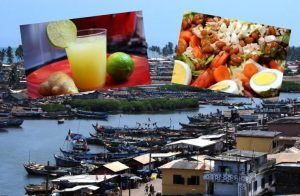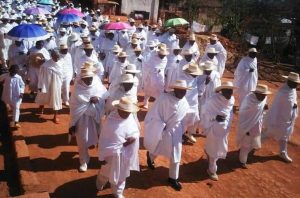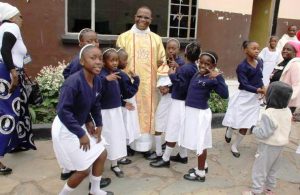The Mexican Christmas is a combination of Christian spirit and indigenous traits. Una fiesta with colour, dances, songs, and joy.
Even though the official liturgical preparation for Christmas begins with the First Sunday of Advent, December 25th remains the centre of the liturgical and secular celebrations. In Mexico, the effects of this feast are felt long before those dates and continue until the beginning of February. Once the Holy Saints’ feast ends, the environment in Mexico begins to transform: local commercial activities, streets, and houses become colourful.
As December begins, family and personal schedules become hectic with dinners, posadas, pastorelas, and gatherings of friends to exchange good wishes and gifts; not forgetting the celebration of Our Lady of Guadalupe on December 12, a booster to the joyful Christmas celebrations.
The Feast of Light begins with poinsettia pots appearing from out of nowhere, an enormous number of lights flashing in the city, lanterns, coloured paper, and many more outdoor decorations – even make-believe “snow-covered windows” in a temperature high enough to melt the icing on cakes! We can feel that the different elements of a big and unique “formula for joy” begin to come together. The main and distinctive elements of the big Christmas celebration in Mexico are the Posadas, the Piñata, the Rama and the Noche Buena.
The Posadas – Nine days before Christmas day are a signpost for almost everybody in Mexico. In the posadas, you can meet friends and relatives who you might not have seen since the previous posada. One must attend all the posadas. In these celebrations, people gather in a different house every day to re-enact Mary and Joseph’s quest for lodging on their journey to Bethlehem for the census. This search for lodging is celebrated in a festive way.
Two children pretend to be Mary and Joseph who knock at different doors (usually two). They are refused entrance by the owners. Then, where the posada is going to take place (usually the third house), the doors open and the celebration begins. People gather to eat and drink traditional Mexican Christmas delicacies like the ponche, a water-based drink in which seasonal fruits and cinnamon sticks are boiled for hours, sometimes along with some strong alcoholic drink.
The piñata – There is no real posada without a piñata. The real celebration of a traditional piñata is the breaking of a paper pot containing gifts for all, especially for children. The piñata may look like a mere pot filled with fruits, dangling above the children’s heads. Blindfolded, taking turns, they will try to break it. The spectators sing songs and cheer the kids along.
Some of the traditional verses that are sung are, “dale, dale, dale! No pierdas el tino porque si lo pierdes, pierdes el camino!” (Strike, strike, do not miss your aim, because if you do not hit it, you will lose your way!); “No quiero oro, ni quiero plata, yo lo que quiero es romper la piñata” (I don’t want gold and I don’t want silver… all I want is to break the piñata).
The Rama – In Southern Mexico, there is a tradition in which people, particularly children, celebrate the preparation for Christmas. It is called the Rama (Branch). This tradition brings songs, dances, and joy together. Beginning December 16th, every night, children gather in small groups and go around the neighbour holding a tree branch, usually without leaves but decorated with a small representation of the Nativity scene, colourful strings of paper, lanterns, oranges and other seasonal fruits, candies, and a depiction of other gifts children expect to receive. From dusk, until the evening is through, they sing in front of every house asking for gifts from the homeowners.
The children sing along these lines, “Good evening! The Branch comes here to sing for you… to see what you can give us… oranges and lemons for these kids who are great eaters!” The children ask for their aguinaldo – a traditional Christmas gift. The lyrics of this song and those of the songs in the posadas allude to the Child Jesus, the Virgin Mary, and St. Joseph. Most of the time, they get some candies, toys, even money as their aguinaldo.
The joyful kids then give thanks for the generosity received with another song, “The Branch now leaves this house with a thankful heart because it was welcomed.” In case they don’t get anything, the children sing a funny song, something like “The people living in this house are probably dying of hunger!”
Noche Buena – All the celebrations reach their climax at Noche Buena, December 24. Many families go to Misa de Noche Buena which used to be exactly at midnight but, nowadays, it is earlier so the family can gather at exactly midnight to exchange warm, tight embraces and gifts. After that, there is dinner with close family members. Many families still keep a little statue of the Infant Jesus in the manger and, while singing traditional lullabies, pass the Baby Jesus to all present to hold Him for a while.
Finally, a member of the family (usually a little boy or girl) places the Baby Jesus in the manger in the Nativity scene prepared some weeks earlier. In these latitudes, Christmas Eve is the peak of the Christmas celebration. After midnight, parties go on for hours till dawn. After some sleep, people usually go to visit other relatives, usually grandparents, with whom the young families were not able to spend Noche Buena. Feliz Navidad! Merry Christmas! (Photo: Colourful Mexican pinata. 123rf) – (Gerardo M. Muñoz)






